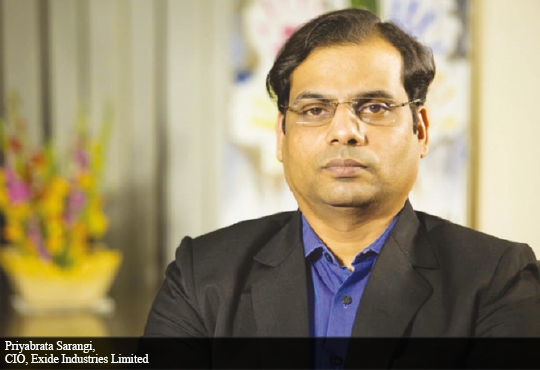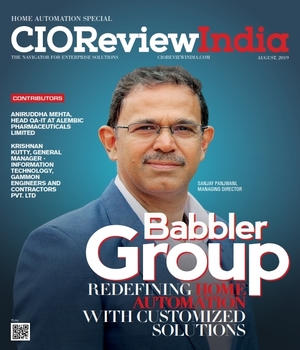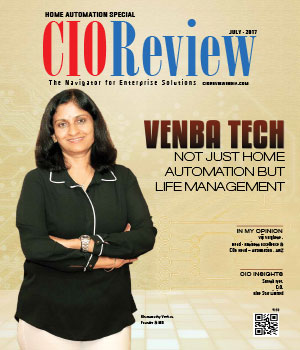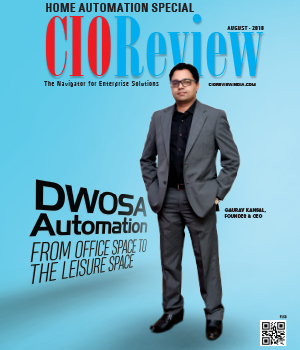
What's your Innovation Strategy?
Prashant Lalchandani, Practice Lead - BFS Transformation, Capgemini FS SBU | Monday, 03 July 2017, 10:01 IST
 The buzz about Innovation and its ability to disrupt is everywhere. Innovation is cited as the mantra that will help organizations deal with ever-increasing customer expectations, help reduce costs, or rise above competition. In today’s world when innovation S-curve has shrunk considerably and pace of technology advancements has significantly accelerated, dealing with innovation is not a one-time affair. Transformation is no longer a destination, it has become a continuous journey. The CXOs of today are required to not only run their ongoing businesses profitably, they have to regularly evaluate new ideas to determine what they can use for their benefit and have to keep looking at the horizon to see any emerging threats of disruption. Dealing with Innovation successfully, requires that it is strategically handled and governed.
The buzz about Innovation and its ability to disrupt is everywhere. Innovation is cited as the mantra that will help organizations deal with ever-increasing customer expectations, help reduce costs, or rise above competition. In today’s world when innovation S-curve has shrunk considerably and pace of technology advancements has significantly accelerated, dealing with innovation is not a one-time affair. Transformation is no longer a destination, it has become a continuous journey. The CXOs of today are required to not only run their ongoing businesses profitably, they have to regularly evaluate new ideas to determine what they can use for their benefit and have to keep looking at the horizon to see any emerging threats of disruption. Dealing with Innovation successfully, requires that it is strategically handled and governed.
1. Make Innovation a key ingredient of Business and IT strategy
In my conversations with CXOs I find that the desire to innovate is generally strong but only a few organizations have a well-defined Innovation strategy. The Business and IT strategies along with plans for Digital Transformation tend to rely more on Continuous innovation (upgraded models of the same product or service) instead of Discontinuous innovation (new product or service that meets a new or unstated need) as they want their plans to be executable and want to avoid uncertainty associated with unknowns.
a. Innovation needs joint sponsorship from Business and IT
Innovation is as much connected with Business strategy as it is with IT strategy. Innovation, when applied well, can provide significant competitive advantage. It is often about being able to think of the business in a new and different way without being constrained by the current state of the enterprise. A sensible approach to Innovation is to look at it in terms of value that the organization that can derive from it rather than how complex it was to build it in the first place. This approach requires that any Innovation effort is led by Business and IT together. IT team has to deliver it, but a Product Manager needs to help decide what kind of product customers will find more valuable. A case is often made out that the CIOs need to be Chief Innovation Officers but in successful organizations business and IT have equal partnership and stake in identifying innovation and making it work.
b. Innovation is not same as R&D
One of the reasons why innovation appears overwhelming is because it is equated with technology innovation to create something that never existed before. An understated part of innovation is to use the existing technology in a way that it supports a process innovation or a business model innovation. Many new businesses of today, e.g. retail ecommerce, have built new propositions by leveraging technology that already existed. Decoding innovation is about focusing on the business value and to not confuse it with the ambition to create a never-seen-before product using a never-used-before technology.
2. Innovation needs an Operating Model
Organizations that want to make innovation work repeatedly for them, need to take a structured approach towards it and reduce if not eliminate the chance element associated with a discovery process.
a. Innovation efforts can be spread out but need coherence
Large organization may prefer a decentralized model to pursue innovation opportunities and spread out their innovation efforts across departments or business units. The advantage of such a model is that each unit may identify opportunities that are beneficial to it and provide the required agility and sponsorship to make them succeed. Tapping the creative energy of the broader organization requires a mechanism where ideas pursued by each unit are discussed together for their impact on wider organization, and to handle overlaps or redundancy across. This can be achieved by setting up inter-department steering committee or innovation forums where these ideas are brought together and synthesized.
b. Build the right innovation team and culture
A successful innovation setup includes the ability to identify ideas, take them to deployment, and then sustain them to reap the benefits. Each of these require different talents and it is unreasonable to expect that that the same person or team can excel in each of these aspects. An efficient organization structure will include specialised roles and teams in each of these areas with sufficient hand-offs and handholding.
The organization culture needs to be such that it can absorb and assimilate out-of-the-box ideas regardless of where they come from (internally or externally) and rewards idea champions. At the same time teams who convert the imagination to reality need to be highlighted for their efforts.
CIO Viewpoint
By Priyabrata Sarangi, CIO, Exide Industries Limited
Smart Homes: Not Too Distant Reality
By Amit Bhatia, CIO, Jaquar Group
By Aniruddha Mehta, Head Qa-It, Alembic Pharmaceuticals Limited
CXO Insights
Home Owners Can Look Forward To Futuristic Home...
By Avnish Mehta, Director - Digital Transformation at CollaberaInc
Empowering Mobile Network Operators With...
By Christos Karmis, President & CEO, Mobilitie
Smart Homes: Changing The Way We Live








